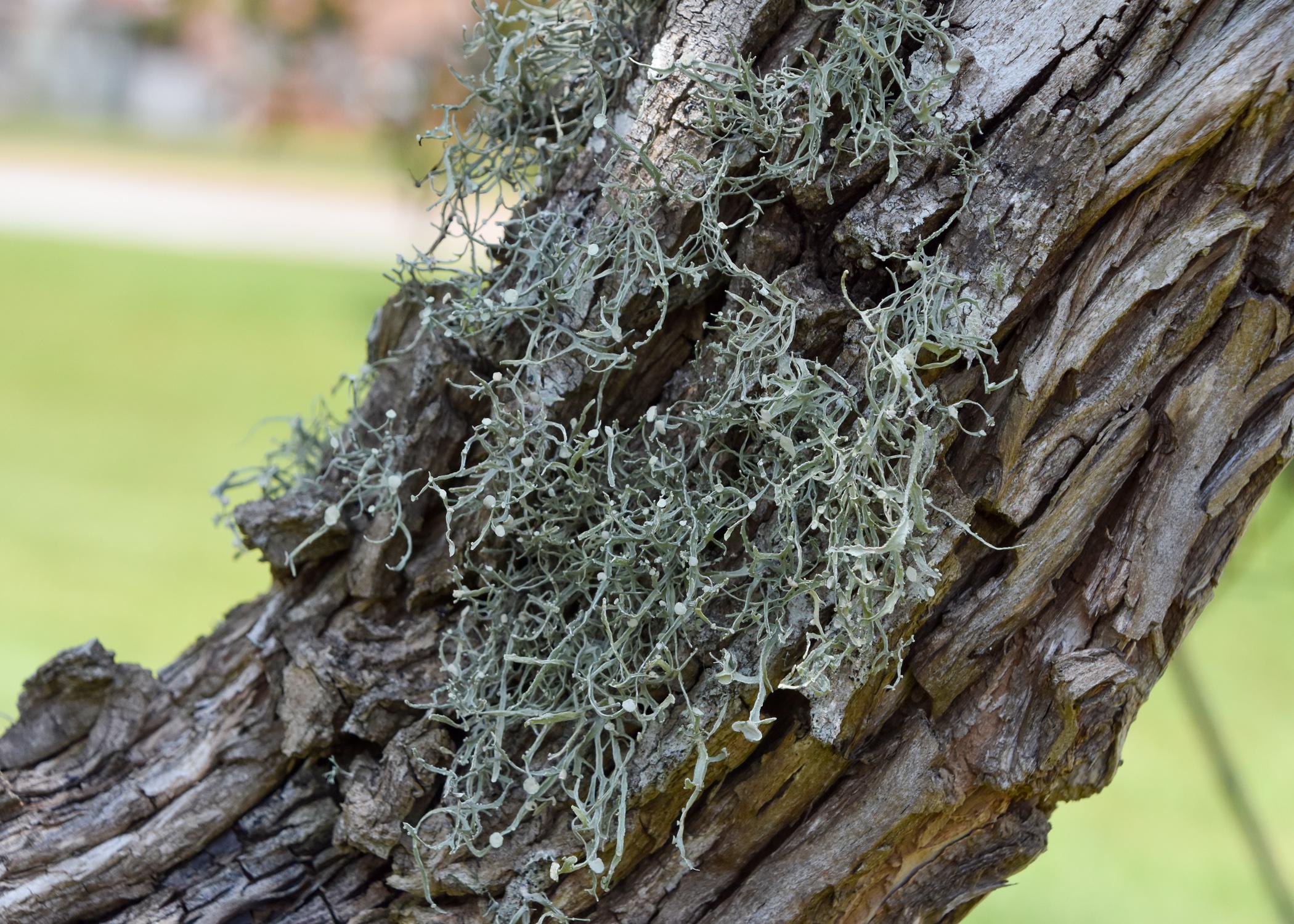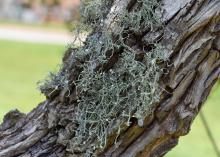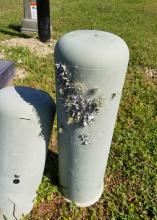Information Possibly Outdated
The information presented on this page was originally released on February 22, 2021. It may not be outdated, but please search our site for more current information. If you plan to quote or reference this information in a publication, please check with the Extension specialist or author before proceeding.
Leafless branches reveal non-threatening lichen
The great winter storm of 2021 is finally over, and now we can finally get out into our gardens to survey the damage. And my goodness: I am getting so many questions about whether this plant or that plant is going to make it.
The stock answer I’m giving is to be patient, as it’s way too early to identify the survivors. While we will see freeze damage to the above-ground portions of plants, the good news is that the ground didn’t have a chance to freeze deeply. Most of our woody and perennial landscape plants will come back from the roots.
Because we’re looking at our landscape plants pretty closely right now, that scrutiny has led to another other main question I’m getting: What is that gray-green, moldy fungus that’s growing on the trunks and stems of landscape plants.
When trees and shrubs are in decline, and because this moldy fungus doesn’t look natural, it’s often assumed this stuff is responsible for the tree and shrub problems. The next assumption is that there has to be some spray to take care of the “problem.”
The culprit is called lichen, and it seems I need to address this organism in writing every year.
Regardless of whether we have a severe weather event, many deciduous trees and shrubs haven’t started to leaf out this time of the year. The lichen is very apparent on the leafless and bare stems.
There’s always lichen on tree trunks, and it uses the trunks and branches only for support. In fact, lichen will grow on any hard surface outdoors, from wooden fences to rocks and birdhouses. I’ve seen lichen growing on a satellite dish.
Lichen is an unlikely combination of fungi and algae that live in a symbiotic relationship using the plants’ bark for support. The algae supply the food via photosynthesis, and the fungi gather the water and other needed nutrients. Lichen is a very interesting organism found throughout the world.
Let me tell you right now that there isn’t a spray or compound labelled for lichen because the lichen doesn’t harm our tree and shrubs. But lichen is an indicator that the plant is under some kind of stress.
Lichen is found on woody trees and shrubs that are struggling. The canopy or leaf cover on these stressed plants will tend to thin out, letting more light into the interior of the canopy.
Since the algae carry out photosynthesis, the higher light saturation allows lichen to grow more noticeably. And lichen gets the blame for the plant decline, when in fact the stresses causing the problems are abiotic and environmental, like drought or excessive heat.
The best strategy to ward off lichen is keeping your landscape plants in optimum condition.
A healthy and well-growing plant will have a canopy that discourages lichen growth. Light pruning of damaged branches encourages new branch growth, which in turn helps to establish a denser canopy.
The Mississippi State University Extension Services has great publications at http://extension.msstate.edu with recommendations for watering, fertilization and other best management practices.





